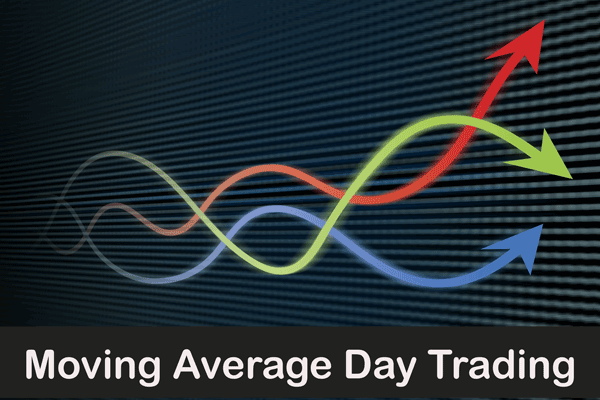Trading in financial markets can be a daunting task, but with the right tools and strategies, it becomes more accessible and potentially profitable. One such tool that has stood the test of time is the moving average, moving averages are versatile indicators that can help traders identify trends, make informed decisions, and manage risk. In this article, we will delve into the world of trading with moving averages and explore how to use them effectively.
Understanding Moving Averages
Before we dive into the mechanics of trading with moving averages, let's first understand what they are, a moving average is a statistical calculation that smoothes out price data over a specified period of time. It provides traders with a clear visual representation of the average price over that period, helping to filter out short-term fluctuations and noise in the market.

Common Types of Moving Averages
There are usually only three common types of moving average, but the cTrader platform offers eight (8) different types for you to trade.
Simple Moving Average (SMA): The SMA calculates the average price over a set number of periods and assigns equal weight to each data point in that period, it is the simplest and most widely used type of moving average.
Exponential Moving Average (EMA): The EMA gives more weight to recent prices, making it more responsive to current market conditions, traders often use EMA for shorter-term analysis.
Weighted Moving Average (WMA): The WMA assigns different weights to different data points within the specified period and it provides more significance to recent prices, similar to the EMA.
Hull Moving Average (HMA): The Hull Moving Average (HMA) is an extremely fast and smooth moving average that almost eliminates lag and manages to improve smoothing.
VIDYA (Chande's Variable Index Dynamic Average): VIDYA (Chande's Variable Index Dynamic Average) is an adaptive weighted moving average indicator. It was developed by Tushar Chande as an attempt to improve the performance of the EMA (Exponential Weighted Moving Average) indicator.
Triangular Moving Average (TMA): A triangular moving average (TMA) is a type of moving average used in time series analysis and data smoothing. It is a variation of the simple moving average (SMA) that gives equal weight to data points within a symmetric triangular window.
Weighted Moving Average (WMA): A Weighted Moving Average (WMA) is a variation of the moving average method used in time series analysis and data smoothing. Unlike the Simple Moving Average (SMA), where all data points in the window have equal weight, the WMA assigns different weights to different data points within the moving average window.
Time Series Moving Average (TSMA):
Now that we have a basic understanding of moving averages, let's explore how to use them in trading effectively.
Moving averages are used for various purposes in time series analysis, including:
- Smoothing: They can help reduce noise and short-term fluctuations in data, making it easier to identify underlying trends.
- Trend Detection: Moving averages can be used to identify the direction and strength of trends in time series data.
- Forecasting: They can serve as the basis for simple time series forecasting methods by extrapolating the smoothed data.
- Anomaly Detection: Sudden deviations from the moving average can be indicative of anomalies or unusual events in the time series.
Using Moving Averages in Trading
Moving averages are primarily used to identify trends in the market and when the price is above the moving average, it suggests an uptrend, while a price below the moving average indicates a downtrend by observing the relationship between the current price and the moving average, traders can make more informed decisions about entering or exiting positions.
Crossovers
Moving average crossovers are powerful signals for traders, they will trade when a shorter-term moving average (e.g., 50-day) crosses above or below a longer-term moving average (e.g., 200-day). A "golden cross" (short-term crossing above long-term) is a bullish signal, while a "death cross" (short-term crossing below long-term) is bearish. Traders often use these signals to initiate or close positions.
Support and Resistance
Moving averages can also act as dynamic support and resistance levels and during an uptrend, the moving average often provides support, while in a downtrend, it may act as resistance. Traders can use these levels to set stop-loss orders or identify potential reversal points.
Multiple Moving Averages
Combining multiple moving averages of different timeframes can provide a more comprehensive view of the market, for example, a trader might use a 20-day EMA and a 50-day SMA to confirm trends and crossovers.
Risk Management
Moving averages can aid in risk management by helping traders set stop-loss orders and manage their positions more effectively, as they can use the distance between the current price and the moving average to determine the level at which to set a stop-loss.
Conclusion
Trading with moving averages is a popular and effective strategy for traders of all levels of experience as these versatile indicators can help identify trends, generate buy and sell signals and manage risk. However, it's essential to remember that moving averages are not foolproof and should be used in conjunction with other technical and fundamental analysis tools.
As with any trading strategy, practice and discipline are crucial for success and traders should backtest their strategies, use proper risk management techniques, and continuously monitor market conditions. With dedication and a solid understanding of moving averages, you can improve your trading skills and potentially increase your chances of success in the financial markets.




